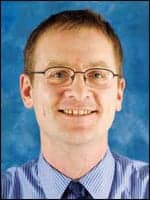| Don’t Use Actigraphy To Diagnose Pediatric PLMD We are writing in response to the article “Monitoring PLM in Children” that appeared in your July/August issue. As was accurately emphasized in the article, there is a critical need for a valid home-based alternative to PSG for evaluation and diagnosis of PLMs [periodic limb movements] among pediatric populations. It was also well explained that assessment of new diagnostic methodology requires statistical testing for agreement rather than correlation (see: Bland JM, Altman DG. Statistical methods for assessing agreement between two methods of clinical measurement. Lancet. 1986;I[8476]:307-310). However, the article then uses correlation to discuss validity in the use of actigraphy for detection of PLMs in children. Our recent article in Sleep Medicine (Montgomery-Downs H, Crabtree VM, Gozal D. Actigraphic recordings in quantification of periodic leg movements during sleep in children. Sleep Med. 2005;6:325-332) demonstrates that although viable correlations may be obtained with the use of a correction factor, there is little agreement between PLMs recorded via EMG versus actigraphy. In fact, when separated into groups, children with diagnosed PLMD [PLM disorder] have a seven-fold higher number of movements per arousal period during sleep than normal children, or those with OSA. Using actigraphy, these movements in arousal are detected as PLMs. Thus, our data demonstrate that, without a previous diagnosis of PLMD using bilateral tibial EMG, it is impossible to know which correction factor to apply. Our results do not support this use of actigraphy to record leg movements in children for the purposes of diagnosing or assessing the treatment response of PLMD at this time. Hawley Montgomery-Downs, PhD Take Updated EDF Into Account Bob Kemp We Want To Hear From You |




